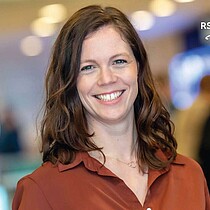

Article: Thursday, 7 April 2016
Over the last 30 years, leaders of innovative companies have been treated as the heroes of business, people who transformed our lives with their vision. That’s true, but as important as great leaders are in building an innovative company, little would happen if effective middle management did not support them.
Indeed, without a cadre of strong middle managers behind him, even Steve Jobs might not have reached the pinnacles of success that he did at Apple. Despite this fact, most management research has focused on senior managers. Even when it comes to managerial innovation, where middle managers obviously play a key role, we know more about the role of the C-Suite than that of the people in the middle. In a new study, my colleagues and I took a few first steps toward filling in that blank space, by examining middle management’s impact on management innovations.
Like the middle managers, management innovations are under-sung heroes. Product and service innovation tends to get most of the glory, perhaps because those types of innovation are easier to see and explain, but management innovations can be nearly as powerful. Toyota Motor Company’s lean manufacturing process and Procter & Gamble’s brand management structure, for instance, transformed not only their companies but also their entire industries. Some historians now argue that the whole Industrial Revolution began not with the invention of the steam engine, but with advances in management.

Management innovation generally rolls out from the top down. Since middle management is responsible for carrying out the wishes of senior managers, senior managers need their middle managers to understand and support the proposed changes. Obviously, the more management innovations a company undertakes, the greater ability middle managers have to create delays and system failures. Yet management literature is silent on how the characteristics of middle management affect the C-Suite’s ability to drive changes in management practice.
Setting up our study required overcoming two serious conceptual limitations. First, how could we measure the amount of management innovation that occurs at a given company? After all, you can’t quantify it by counting patents, say, or sales. Unless the outcome is architecture as remarkable as the Toyota Production System, or a feature that the company can tout as an advantage to customers, such as Cognizant’s “two-in-a-box” dual-management structure for its distributed offshore services, management innovations tend to be somewhat obscure.
One way to do it, we believed, was through a close reading of annual reports to identify passages that refer to management innovations. Over the last 20 years, scholars and practitioners alike have increasingly accepted the validity of this kind of quantified written analysis.
Second, how could we determine which middle manager characteristics made people more or less likely to follow top management demands? Relational demography theory gave us a clue. This well-established theory holds that the more closely subordinates identify with a superior based on their shared characteristics, the easier they find it to cooperate. As one research team has noted, demographic similarity invokes ‘an attraction dynamic whereby demographically similar individuals accentuate the positive attributes of each other and derive a positive social identity.’ In addition, the closer someone sees someone else as being like him or herself, the more likely he or she is to see the other person as reliable, trustworthy and competent. Conversely, the dissimilar tend to be perceived as more dishonest, untrustworthy and uncooperative.
The more similar middle managers feel their superiors are to them, the more likely they are to take on tasks that go beyond the scope of their generally understood role. Dissimilarity, meanwhile, leads to increased conflict because of perceived differences in values, aloof demeanour, and/or miscommunication. To us, this pattern suggested that companies where the middle managers most closely mirrored the demographic of their senior managers in terms of age, gender, educational level and function should be the companies where middle managers would be the most receptive to their superiors’ ideas, which would ultimately lead to more energetic pursuit of their initiatives.
This correlation would be particularly significant in management innovation, we believed, as a management innovation effort often demands a lot from managers. Not only must they learn how to do things in a new way, they frequently must make sure that the people they supervise also learn how to do things. This can be demoralising for mid-level managers. It is one reason that we thought a close relationship with top managers would be essential. Further, we expected that the functional role the executives played might be important: did they work for an inner-facing (such as operations or accounting) or outer-facing (marketing and sales) function? Our prediction was that when it came to managerial innovation, inner-facing executives would be more invested in such process-focused changes.
To test our hypotheses, we designed a two-step research process:
1. We looked at the text of the annual reports of 33 organisations operating in the Netherlands between 2000 and 2008. With advanced computer-aided content analysis software, we analysed where and how often certain management innovation-related words (such as adopt, implement and transform) came up in the annual reports of each company We sorted by numerical efficiency ratios such as reorganisation expenses and overhead ratios, and managerial productivity.
2. We matched these findings with data pertaining to 8,000 middle and senior managers who worked at these 33 companies over the same eight years – records obtained from a large, globally-recognised human resources consultancy. The records identified only the individual’s position, gender, educational level and function.
The results did and did not surprise us. On the one hand, we were surprised to learn that age and gender did not correlate to the number of mentions of management innovation we had found in any of the companies. On the other hand, greater similarity in the educational level and functional experiences of senior managers and middle managers did correlate with the presence of management innovations as we had hypothesised.
As with most research, our study contains a few limitations. Although we believe content analysis is a useful tool for measuring management innovation, it’s akin to those chemical tests that can measure the presence or absence of something but not its strength. This approach tells the researcher that management innovation is occurring, but it can’t distinguish whether it’s an incremental or a radical innovation.
Similarly, the limited nature of our management data made it impossible for us to answer a number of important questions, such as whether having a similar length of tenure at a company is an important contributor to identification between middle managers and senior managers.
Although our work suggests that similarity between the middle and top tier managers reduces the need for communication, executives may not be better served if they are able to hire people who resemble themselves. On the contrary, a number of studies have found that it may hinder other kinds of innovation. In product development, for example, diversity has been shown to spur creativity. We think that companies may be better off drawing a more positive lesson instead: if you want to make sure you get the benefits of diversity without the downside of more misunderstandings, it may be a good idea to place more emphasis on internal communication.
Further research will clarify some of these mechanisms, but some of the most important lessons around management innovation adoption are already clear. First, keeping communication lines open from the top to the bottom of the company is crucial. And second, keeping up with advances in management innovation is also crucial. The competitive advantages of technological and product innovation have become relatively short-lived, eroded by low-cost, high-skilled global competitors, reverse engineering, and weakened intellectual property protection.
Rotterdam School of Management (RSM)

This article draws its inspiration from the paper The Conjoint Influence of Top and Middle Management Characteristics on Management Innovation, written by Mariano L.M. Heyden, Jatinder S. Sidhu, and Henk W. Volberda and soon to be published in the Journal of Management (STAR).


Science Communication and Media Officer
Rotterdam School of Management, Erasmus University (RSM) is one of Europe’s top-ranked business schools. RSM provides ground-breaking research and education furthering excellence in all aspects of management and is based in the international port city of Rotterdam – a vital nexus of business, logistics and trade. RSM’s primary focus is on developing business leaders with international careers who can become a force for positive change by carrying their innovative mindset into a sustainable future. Our first-class range of bachelor, master, MBA, PhD and executive programmes encourage them to become to become critical, creative, caring and collaborative thinkers and doers.
